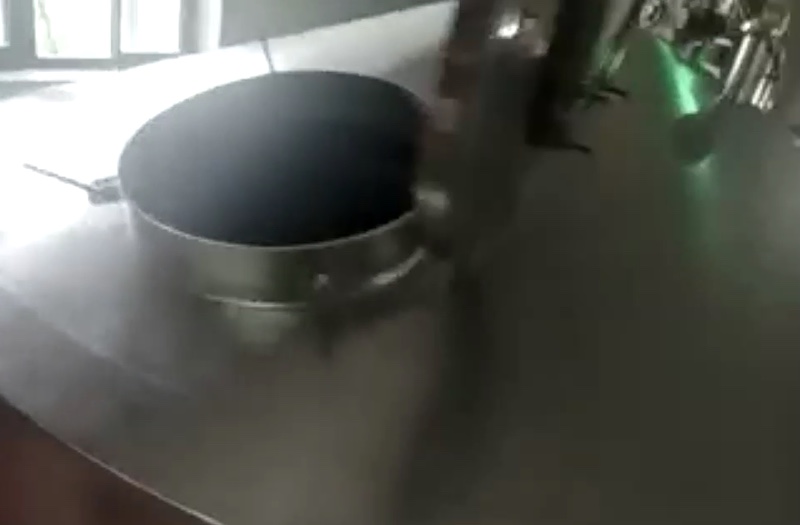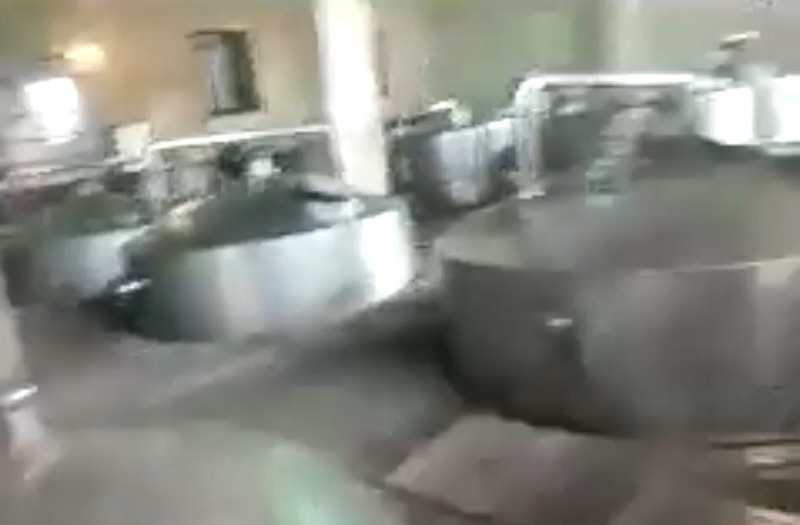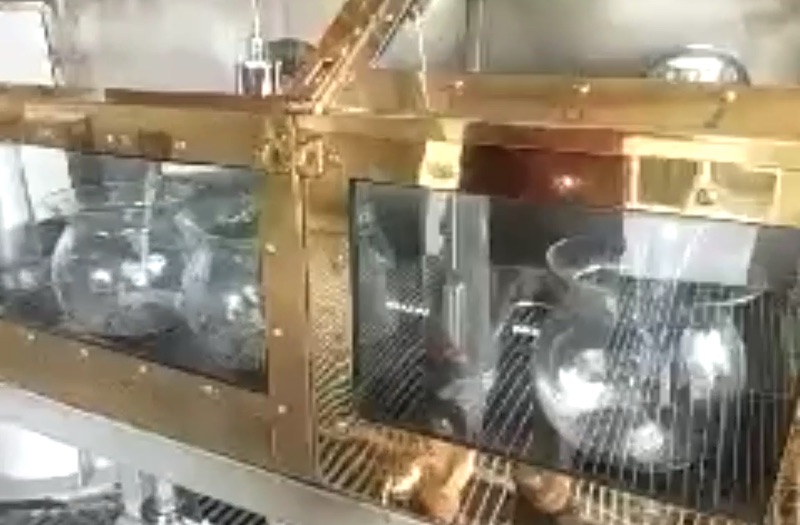Travels to India: Paul John Distillery Tour

Credit: Paul John
Scotland is considered the motherland of single malt whiskies and it is where anyone who is fond of whisky will head to. Ireland is the other “flagship” location for anyone who loves whisky. Since the 1990s, however, more and more whisky distilleries are popping up in places that are outside of the United Kingdom. The most famous ones are, of course, Japan, and to some extent, Taiwan.
Do you think about India when you think whisky? Probably not. Nonetheless, the rise of Indian single malts started with Amrut, and now Paul John is catching up!
History of John Distilleries
John Distilleries opened in 1996 in Bangalore India. The founder, Mr Paul P John, set out to win the market with a variety of excellent products, including whisky, brandy and wines. In 2008, Paul John Distillery opened in Goa, India. From the onset, Mr Paul P John wanted to set a high standard for the whiskies that came out of the distillery, so he chose his barley, yeast and water from local sources. Paul John Distillery is famous for its use of the six-row barley, which is harder to process for whisky production. The high standards of the distillery produce excellent Indian Single Malts that are enjoyed over the world today.
Paul John Distillery Tour
As the Covid-19 pandemic rages on, there is no way we could have travelled anywhere. So the importers for Paul John whiskies decided to bring the distillery to us instead. The Whisky Store worked with the distillery to have their Visitor Centre Manager bring us virtually to the distillery and invited us to see the magnificent building that they have.
I was very excited to attend because I personally enjoyed Paul John single malts!
Introduction to the visitor centre

The Visitor Centre Lobby (Credit: WhiskyStore’s Zoom Session)
We started the tour with a bird’s eye view of the magnificent visitor centre at Paul John Distillery. The company built the distillery after the Portuguese style of mansions. Some visitors even assumed that the visitor centre bought over an old Portuguese mansion! The inside of the visitor centre is huge and airy. The symbols of India, as well as the style of furniture, are aplenty within. A visitor walking into the visitor centre will definitely feel like walking into a grand Indian palace of sorts.
Visitors at the distillery will be treated to a film in a small theatrette first, where they get a sense of the history of Paul John Distillery, before walking down an aisle full of awards and certifications. The recognition of premium whiskies dot the walls of the aisle, showing off the skills of the craftsmen found at Paul John.
The Production
The excitement built up as we “walked” into the production site. Our guide, Pankaj, first brought us to the granary, where they store the barley. Sacks and sacks of barley can be seen as the background as he walked us through the three ingredients to making whisky – barley, yeast and water.

The bags of barley at the background with our handsome guide in the foreground. (Credits: WhiskyStore’s Zoom Session)
Pankaj explained that Goa is not suitable for the growing of barley, and all their barley is grown in the Northern part of India, at the foothills of the Himalayas. Paul John uses a unique 6-row barley varietal that gives a thicker husk which, of course, make it more difficult to mill and use in whisky production. As we know, almost all other whisky distilleries in the world use the 2-row barley. The reason for using the 6-row barley is simple. Thicker husks mean more protein in the barley, which produces the signature cereal notes, buttery flavour and oily texture that you find in Paul John whiskies.
Milling and Malting of Barley
Paul John does not do the milling and malting of the barley itself. The distillery outsources the process to a local company which do all the work for them before delivering the ready-to-use malted barley to the site at Goa.
The interesting fact here to note is that Paul John buys peat from Scotland for all their peated barley. The peat comes from both the Highlands and Islay. The different barley is then used for different expressions of whiskies, which we will go into later on.
The milling ratio at Paul John is similar to many Scottish distilleries – 70% grist, 20% husks and 10% flour.
Mashing

The Mash Tun (Credits: WhiskyStore’s Zoom Session)
The distillery uses a combination sort of mash tun. Pankaj calls it a combination of the traditional mash tun and a lauter tun. I am hazarding a guess that it is a semi-lauter tun, but that would probably need to be checked.
I find the mashing process rather interesting as Paul John uses four batches of hot water for mashing instead of three. It probably got something to do with the higher proteins found in the 6-row barley, but I could be wrong. The team uses two tons of barley and 12 thousand litres of water for mashing in their mash tun. The water is delivered in four batches, the first at 65 degrees Celsius, the second at 75 degrees Celsius, the third at 85 and the last at 95. The sugary liquid obtained from mashing (called wort) is then transferred to the fermentation tanks.
Fermentation

Stainless Steel Washbacks (Credit: WhiskyStore’s Zoom Session)
Paul John has 14 stainless steel washbacks with volume ranging from 16,000 litres to 18,000 litres. In a usual cycle, 11,000 to 12,000 litres of wort goes into the washbacks to ensure sufficient space for fermentation to happen. The distillery uses distiller’s dry yeast as it performs the best under the climate at Goa.
Paul John ferments their wort for 50 to 60 hours and once the fermentation is done, the wash sits in the washback for another 10 to 12 hours before they pipe the wash to their copper stills. The wash, at around 6 – 6.5% abv, is fruity, with notes of pineapples and jackfruits.
Distillation

Copper Pot Stills and Condensers (Credit: Paul John)
The aspiration to distil excellent single malt whiskies in Goa drives Paul John to install premium, locally-made copper pot stills when they opened in 2008. Over the years, the distillery expanded and more stills are added. The wash is doubled-distilled, once in the 12,500 litres wash still and then again in their 6,000 litres spirits still.
Pressurised steam heats up the stills for the distillation and the wash converts into low wines in the wash still. The low wines increase the alcohol percentage to 17-19% abv. To create more flavours, Paul John uses condensers and coolers to ensure high reflux during the distillation process. In the second distillation, the alcohol percentage rises to above 70% abv.

The Spirits Safe (Credits: WhiskyStore’s Zoom Session)
The heart of the cut is between 65-70% abv but the number is not the most important. Distillers must taste the new make before they decide to make the cut. Once the alcohol percentage drops below 65%, they stop collecting the liquid as their new make. The flavour profile of the new make is still fruity, with apples, banana and pineapples taking dominance.
Maturation and Management of Casks

Racking System of Cask (Credits: WhiskyStore’s Zoom Session)
There are 20,000 casks maturating on-site at Paul John Distillery. They have three warehouses to store them. One of them is underground, while the remaining two are above ground. As you can see in the above (not so clear) picture, the warehouse that we went to show a racking system that is similar to how American distilleries store their bourbon. Pankaj explained that the flavours vary from cask to cask due to the way they store the casks, which echoes the Bourbon industry in the USA.
There are many experiments going on at Paul John. They use a host of different casks, ranging from typical bourbon casks to Oloroso, Pedro Ximenes (PX), Virgin oak and fresh Limousin Oak casks. Customised casks from Casknolia also boast Tawny Port casks. Our guide shared that all the casks are only used twice before they are either renewed or sold.
The casks came from various places in the USA and Europe. One little nugget of information that I like to share is that Paul John buys bourbon casks from Heaven Hills. Now, I am not a bourbon person, but I really enjoyed Heavens Hill bourbons after a friend gave me a sample to try. It’s flavourful without being way too sweet like many of the other bourbons. I would really love to try the Paul John expression that uses the Heaven Hill’s bourbon casks when they are bottled.
Angel Share
I wanted to give angel share a little spotlight here because of the hot climate at Goa. Angel share is up to 8-10% a year in India, which is pretty high when you compared that to Scotland at 2-3% a year. Whisky matured at Paul John ages faster, so whisky that matured for 4 years in Goa is almost the same as whisky that matured for 16 years in Scotland. Importantly, the acceleration also ensures that the flavours build up faster in the cask.
Paul John Distillery matures their core range of whisky for a minimum of 5 to 6 years before bottling. They have a recent whisky matured at 4 years and have received acclaim for it. However, due to the young age of their whiskies, Paul John chooses not to put the age of the whiskies on the label to prevent the biases of age from the consumers.
Whisky Tasting
We went back to the visitor centre after the warehouse tour and tasted five whiskies. Of course, we are drinking them from home! The five expressions are Nirvana, Brillance, Christmas Edition 2019, Edited and Bold. Out of the five, I love the Brillance best, followed by Bold and Edited. Nirvana is mild and nice as a starter and the Christmas Edition 2019 is perfect for a long night of enjoyment.
I would like to give a special mention to Brillance, which is matured for 5 to 6 years, in both first and second filled bourbon casks. The flavours are balanced on both sweet and oaky, making it the perfect fit as your daily dram.
Both Edited and Bold are peated, with Edited using Highland peat and Bold using Islay peat. As you can see from my preference, I have a thing for Islay peat and lesser for Highland peat. Nonetheless, both of them are good drops!
Where to buy Paul John Whiskies
We hope you have enjoyed our story on Paul John and learned a little more about Indian single malt whiskies. We do apologise for the bad photos as we had to screengrab them from the Zoom sessions! It’s the most authentic photos that we want to portray that made us do screengrabbing!
If you would like to purchase bottles, head over to The Whisky Store and grab them!


